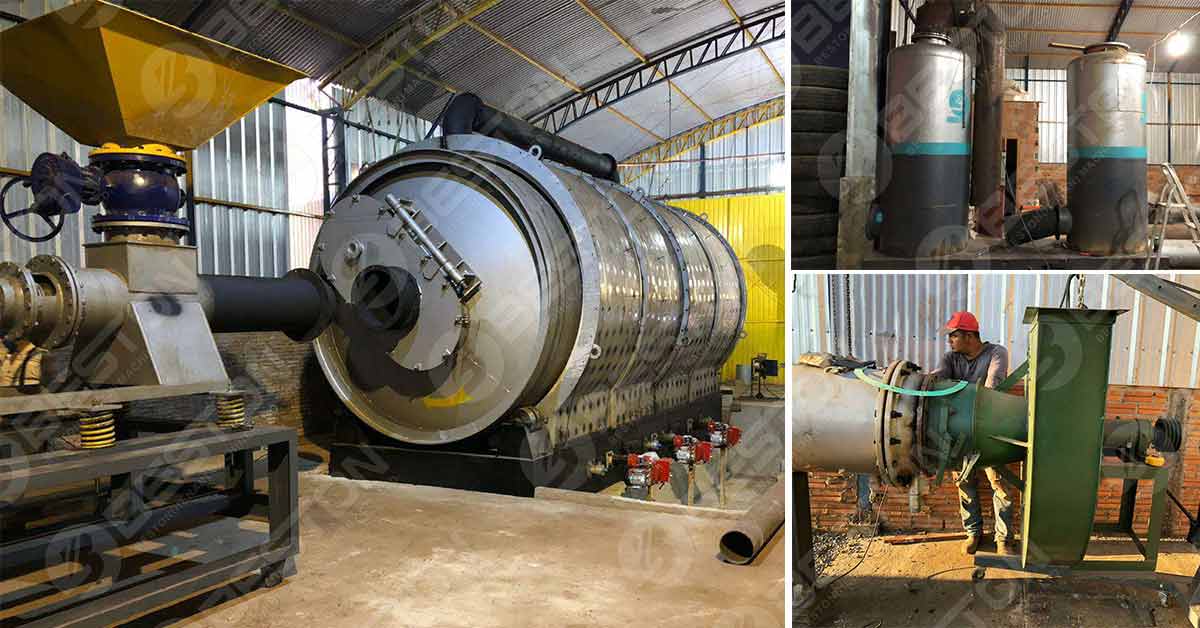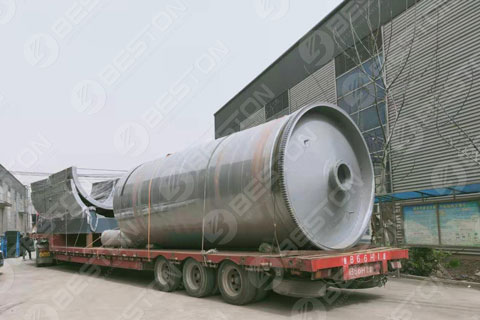It may come as a surprise, but waste tires can be turned into fuel which you can use in cars and machines. The introduction of waste tire pyrolysis plants is making it possible to achieve this feat. Experts believe that it’s the best example of the reduce, reuse, and recycle concept. How does a tyre pyrolysis plant work? Here’s everything that you need to know.

Waste tire pyrolysis plant working principle
There are three main parts of a waste tire pyrolysis plant: the reactor, converter, and condenser. The reactor is responsible for heating the tires and melting them properly. It sends the molten rubber to the converter. The converter is responsible for turning the molten tire into oil gas. The oil gas then goes into the condenser that generates liquid oil that you can use as fuel in vehicles and machines. These plants use 100% of the tires that you put inside, meaning there is 0% waste after a full cycle. View a pyrolysis project report.

Let’s take a closer look at how the plant works from the first stage to the last:
1. First of all, this plant not only uses waste tires but also rubber and waste plastic. The secret to the success of this plant is its ability to melt these items within a few minutes. You need to put all these things in the feeder that breaks the materials into small parts, thus making it easier for the reactor to melt them. The feeding machine converts the materials into small pieces before sending them to the reactor. The reactor then twists and turns them at a high temperature so that they can melt quickly. Look at several types: https://bestonmachinery.com/tyre-to-fuel-recycling-plant/.
2. As the reactor melts the tires, the oil gas collects at the bottom of the chamber. Once all the materials melt properly, they slowly enter the converter. This chamber ensures that there is no solid particles left. Even if it picks up any solid particles or lumps, it will send them back to the reactor for the next session. The converter transfers the oil gas into the condenser in the next stage.
3. The condenser is the chamber that converts the oil gas into fuel. It uses a typical condensation chamber where the heated oil gas rises to the top of the chamber, waits for a few minutes, and finally liquefies. The liquid that rests at the bottom of the chamber is the combustible fuel. The condenser also has a desulfurization system connected to the furnace to send the oil gas that doesn’t liquefy in the first attempt. This means the plant hardly has any waste materials left after every session.
4. You will find an oil tank right underneath the condenser. This tank collects the oil from the top. The oil is cooled down to approximately 40 degrees Celsius before packing it in barrels.
A waste tire pyrolysis plant can help put an end to the crisis of combustible fuel. This would make people less dependent on natural resources and instead lean toward using waste tires, plastic, and rubber to make fuel. Besides, investors could use tyre shredder to recycle tyre waste: https://bestonmachinery.com/tyre-shredder/.